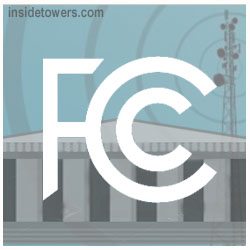At its October 25 open meeting, the FCC adopted a Notice of Proposed Rulemaking looking to revise or eliminate its rules concerning access to common FM and TV tower sites. The rules prohibit the grant, or renewal of a license for an FM or TV station if that applicant or licensee controls an antenna site that is “peculiarly suitable” for broadcasting in the area and does not make the site available for use by potential competitors. The rules have been used sparingly because of modern tower site use and now the Commission wants to know if they should be revised or wiped from the books.
The rules stem from 1945 when FM and television broadcasting were still in their infancy, the infrastructure available to broadcast a signal over the air was sparse, and there were broadcast material and equipment shortages. At that time, the FCC was concerned that exclusive use of an antenna site could restrict the number of FM and TV stations in a particular area or otherwise impede station competition.
In 1945, there were 46 licensed FM broadcast stations; today, there are 6,726 FM commercial stations and 4,179 educational FMs. The terrestrial radio broadcast market today also includes 4,610 AMs, 2,178 LPFMs, and over 8,000 FM translators and boosters. In 1945, there were nine television stations; today, there are 1,757 commercial and noncommercial educational full-power TV stations, 387 Class As, almost 1,900 LPTVs, and more than 3,600 TV translators.
The dramatic increase in the number of TV and radio stations since 1945 has contributed to a corresponding jump in the number of broadcast tower sites. While some communications towers are owned and operated by broadcasters, “the vast majority appear to be owned by non-broadcast entities, including companies specializing in tower leasing such as American Tower, Crown Castle, InSite Wireless Group, and Vertical Bridge,” says the agency in the NPRM. “[W]hile it appears broadcasters were more likely to have owned their towers in 1945, this is less the case today, and there is now widespread availability of tower capacity from a variety of tower companies,” the Commission says.
Many tower sites are available for lease and shared use by broadcasters and wireless carriers, helping broadcast tower tenants and other entities avoid the capital investment, environmental, zoning and other concerns involved in building new communications towers. The co-location trend has also reduced the cost and other barriers to entry associated with the need to build new transmission facilities. In addition, the development of broadband antennas now permits multiple FM and TV stations in a market to share an antenna, thereby reducing the cost of antenna and tower facilities and permitting towers with broadband antennas to accommodate more individual FM and TV tower tenants, the FCC states.
Questions the agency poses in the NPRM include: Are there enough towers and antenna sites suitable for FM and TV broadcast use? Does the current abundance of towers and antenna sites owned or controlled by non-broadcast entities render the rules regarding use of common antenna sites unnecessary? If the agency eliminated the rules, what is the chance that TV and FM owners would need to build their own towers?
Publication in the Federal Register triggered the comment due dates; comments are due December 6, with reply comments due on December 23, to MB Dockets 19–282 and 17–105.
November 7, 2019





Reader Interactions